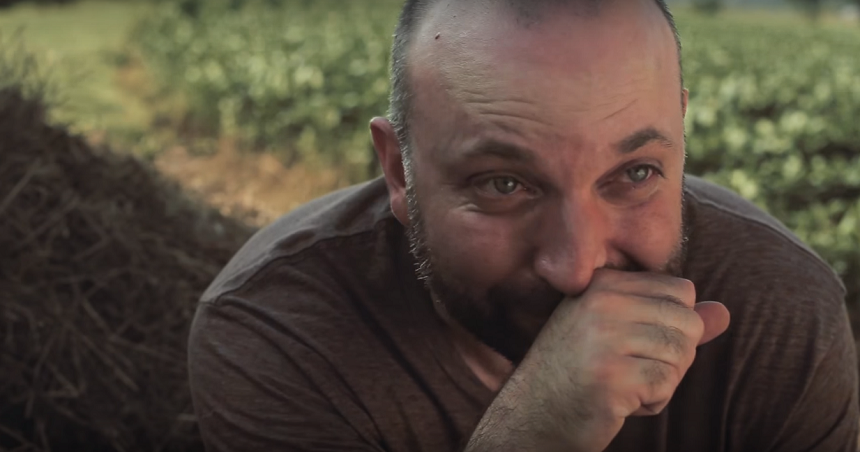“The only way I would use a drone shot in the movie was if it served a purpose. The worst is when shots don’t add anything, they just look cool.”
Every year, LakeFrontRow talks to the filmmakers behind some of our favorite entries from Madison’s 48 Hour Film Project, which challenges teams to write, shoot and cut a short film in the span of one weekend.
In our notes from this year’s two programs, Homefront stuck out for its professional polish and a calm, even-handed treatment of its former soldier (Carlos Tucker). As a service member with a crummy job and a shaky family life, Tucker telegraphs his character’s ravaged experiences with pensive expressions and a small chip on his shoulder. Director Emma Siewert keeps any chance of delirium in check, trusting both Tucker and her creative team to convey all that’s needed across a somber, Memorial Day weekend.
This past weekend, I spoke with Siewert, who works as a producer at NBC 15.
When you drew holiday movie as a genre, what was going through your head?
Well, we also drew animal film as a genre, which was even harder to think of an idea for. When we picked holiday film, it felt like we could go many ways with it. You could do a comedic holiday film. A dramatic holiday film. A horror holiday film. It was just trying to nail down which way we wanted to go and we decided to do more of a dramatic film. It felt like we could use our character and our locations better.
And Memorial Day is such an odd choice.
Originally we had thought of the Fourth of July with it being summer, but the Fourth is a happier holiday. Memorial Day is always harder for veterans and we felt like Memorial Day was the choice for us.
You rely a lot on your actor’s expressions and what the camera is doing, which is always nice to see.
Before we picked any genre, we talked about how short films are driven by emotion, so the less dialogue, the better. It leaves room for the audience to piece things together for themselves, and that makes for a better short. Epecially with the amount of time we had.
How much of a script was there then?
Carlos Tucker has acting experience so he helped drive the character’s emotion and answer questions about him. “Would he do this?” “Would he do that?” We did have a script, we just didn’t always follow it.
One of the things you pull off so well is how naturally you incorporate criteria in the finished product. The biggest example that jumps out to me is the tape measure and its place in the character’s memory.
When you think of a tape measure, it’s so random. How do you fit that into a movie without the audience asking “What? Why are you doing that?” One of the crew members had just gotten a little pink tape measure and it wasn’t manly. How do we fit this with the character? So we worked it in as if it were his daughter’s and existed in a memory. It didn’t feel natural that someone would just find a tape measure in a box though, so we added other elements. I remember growing up and being able to measure myself. That was a vital memory of my childhood, and Carlos has the most adorable daughter ever, so it really worked when she said it was her tape measure.
There’s a drone credit, too. How soon into production did a drone-assisted shot become a possibility?
Sarah Dopf’s family owns the drone and her fiancée’s family owns this huge property, so she was playing around with shots before the 48 Hour weekend. The only way I would use a drone shot in the movie was if it served a purpose. The worst is when shots don’t add anything, they just look cool. We did other drone shots but they didn’t fit. I wanted it to be motivated and purposeful.
I always like to know where 48 Hour team names come from. Is there a story behind “The 15 Machine?”
We all work at NBC 15 and wanted to incorporate that. I have to shout out to Jocko, who came up with the rhyme of “15 Machine.”
If this were the 72 Hour Film Project, what would you have done differently?
72 hours would have given us more time to add sound effects, more time to work with the audio and the mix. We also only had so much time for the opening scene because the humidty caused our lens to fog up. We tried to shoot the day after and could only shoot in a limited location and quickly.
But I’m really happy with what we came up with in 48 hours. This was my first time directing, so I had a lot of help from the team. Everyone did their part and more.
- 2016’s audience favorites, as well as a handful of judges awards, will be announced at the Madison 48 Hour Film Project’s “Best Of” Screening. The screening takes place at 5:00p at the High Noon Saloon on Sat, Aug 27. Admission is $5.

